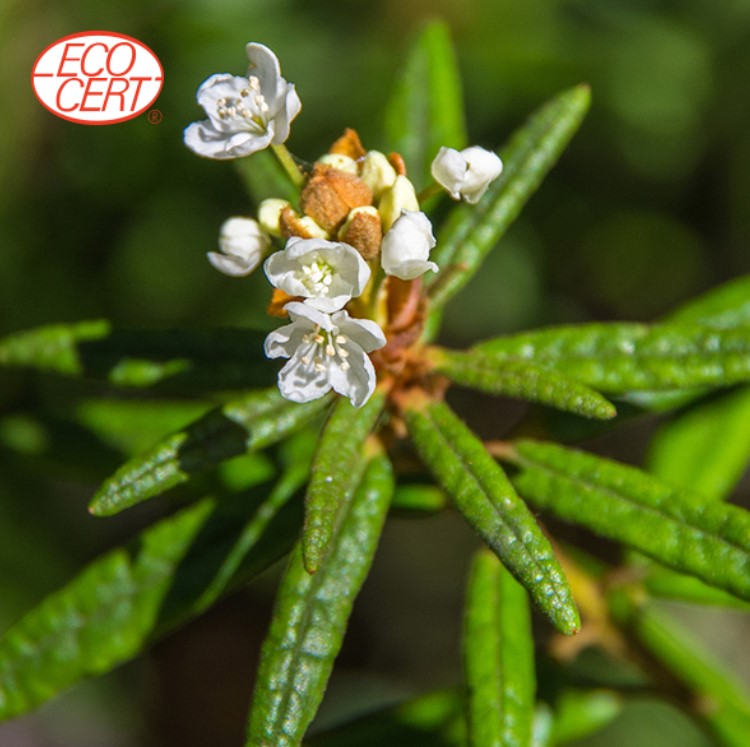Product Description
Latin Name: Rhododendron groenlandicum or Ledum groenlandicum
French Name: Thé du Labrador, Lédon du Groenland
English Name: Labrador Tea, Greenland Moss
Origin: Quebec, Canada
Distilled Parts: Leaves and flowers
pH: 3.8-4.0
Stability and Shelf Life: Very stable. Should last at least 2 years or more.
Aroma and Taste: Typical fresh aroma, herbaceous with an after taste of eucalyptus.
ORIGIN
The Greenland Moss is a medium-sized shrub found in North America from coast to coast. It crosses the Rockies to the west coast, extending from Alaska to the tundra of the lower mainland Arctic. Labrador tea is found on peaty, acidic and swampy soils. It will choose the least humid places such as mounds and woodlands or semi-wooded areas. It is often found in the presence of black spruce. This resinous shrub with thick alternating and persistent leaves produces white flowers grouped like an umbrella and which are overgrown by young shoots in the spring. The back of the leaf of the Labrador Tea is particular, because of the presence of white or orange woolly hairs.
HISTORY
The Greenland Moss is a wild tea well-known to explorers, First Nations, Inuit and Americans of the time. When tea was in short supply, Labrador tea was a common substitute. Crees from Hudson Bay used it for healing by chewing the leaves and applying it to wounds. Native American women take an infusion three times a day to facilitate delivery. Powdered leaves are very effective against headache thanks to its analgesic power. This powder mixed with fish oil was also applied directly on a baby’s irritated skin. Labrador tea is one of the most therapeutic herbs used by native North Americans.
THERAPEUTIC BENEFITS OF THE HYDROSOL
PHYSICAL
Labrador tea increases energy metabolism and stimulates the body. It is very well known for its activity in the liver and for managing major moments of intense stress.
Lydia Bosson calls this hydrosol, the fountain of youth.
- Circulatory system: lymphotonic, venous and lymphatic decongestant.
- Skin system: very high affinity for skin and mucous membranes, tones, softens and regenerates tissues. Inflammatory, purifying and soothing.
- Digestive system: digestive, eupeptic, stomach, hepatic stimulant, appetite inducing, spasmolytic of knotted intestinal solar plexus with analgesic properties, mucolytic and lipolytic effect. Stimulates the pancreas.
- Immune system: rapid and marked immunostimulant.
- Nervous system: sedative, harmonizes and calms the nervous system at the neurotransmitter level, anxiolytic.
PSYCHIC
- Insomnia
- Nervousness
- Important stress
Uses: Liver drainer (biliary disorders), after surgery, hepatitis, cirrhosis, intoxication or as part of chemotherapy, allergies; skin diseases like: psoriasis, eczema, sensitive skin and skin allergies; digestion trouble, heaviness after meals, flatulence, and intestinal gas.
Contraindications: to avoid during the first 6 months of pregnancy, children under 6 years of age and epileptics.
Recommendation: hydrosols are wonderful for the well-being of humans, animals, insects and plants. There are many books on aromatherapy which should be referred to for proper and safe use.
